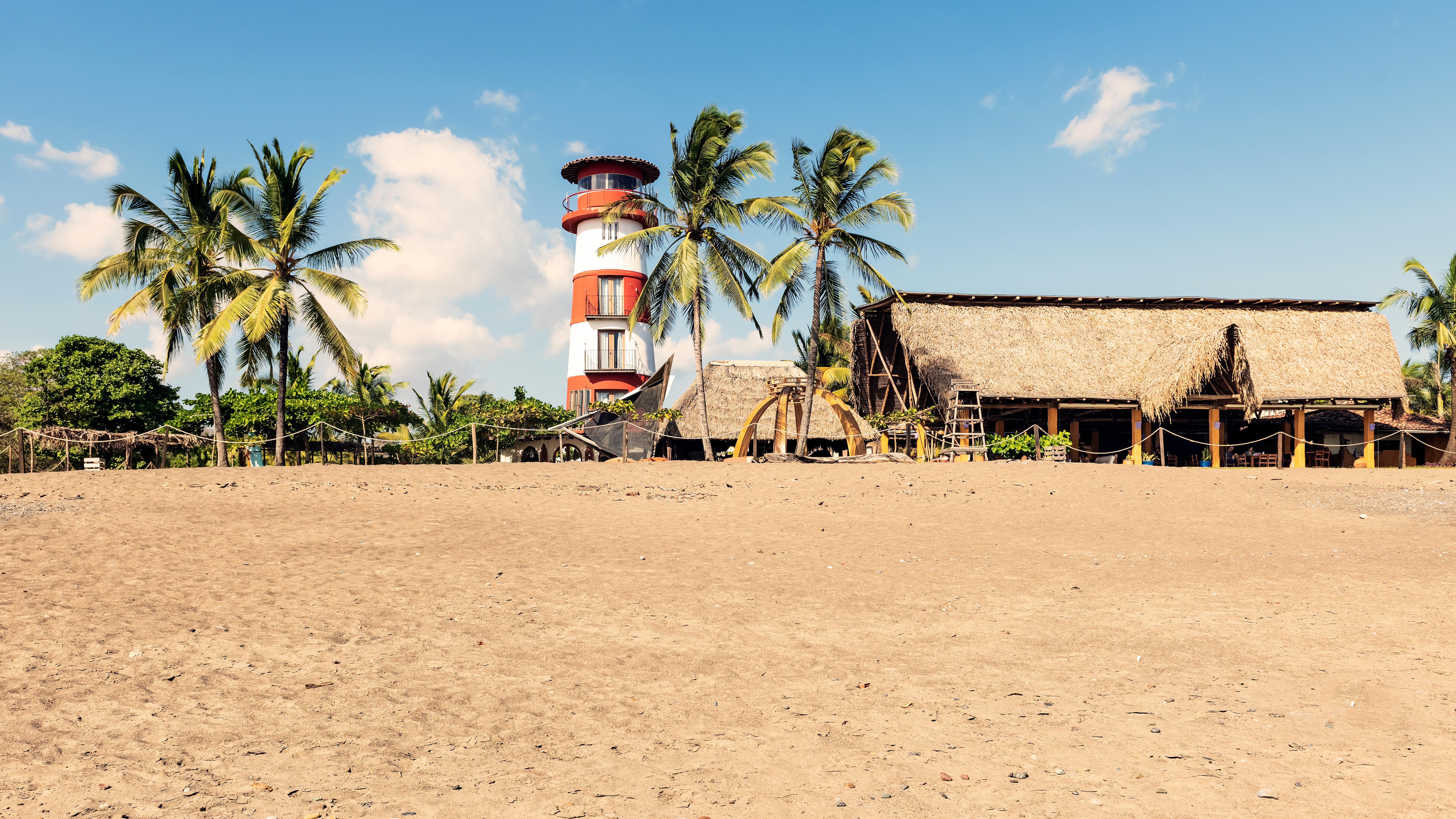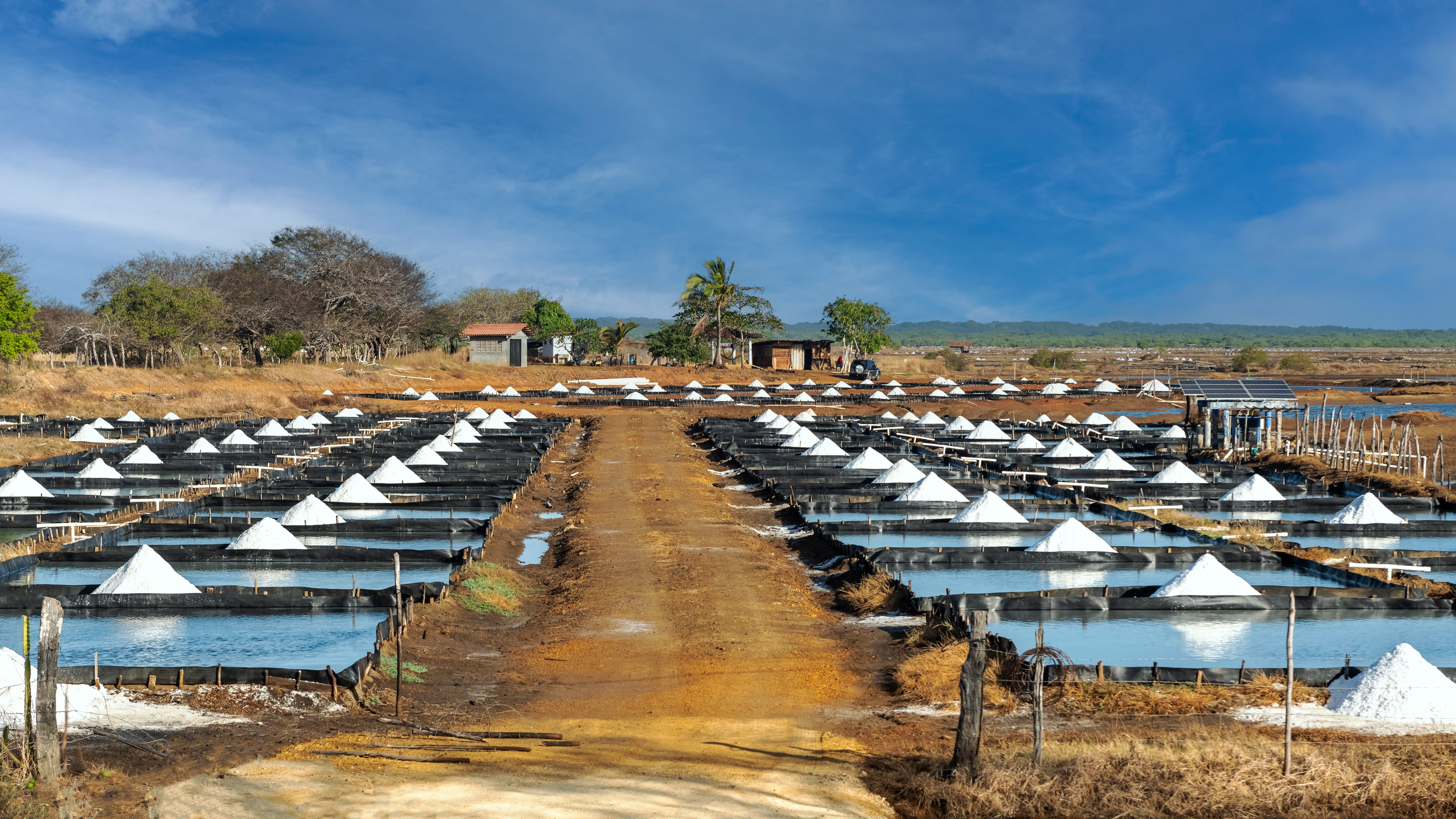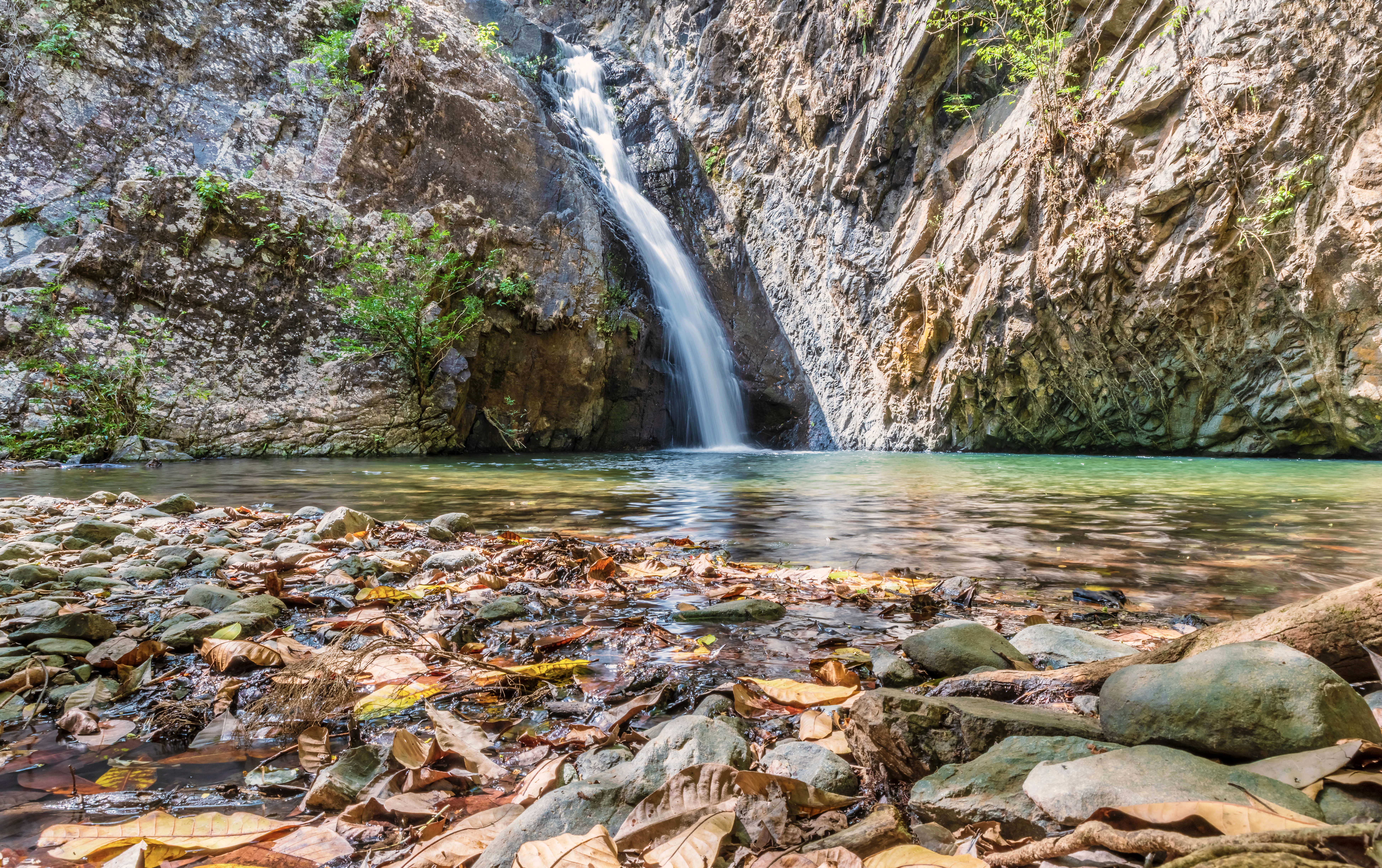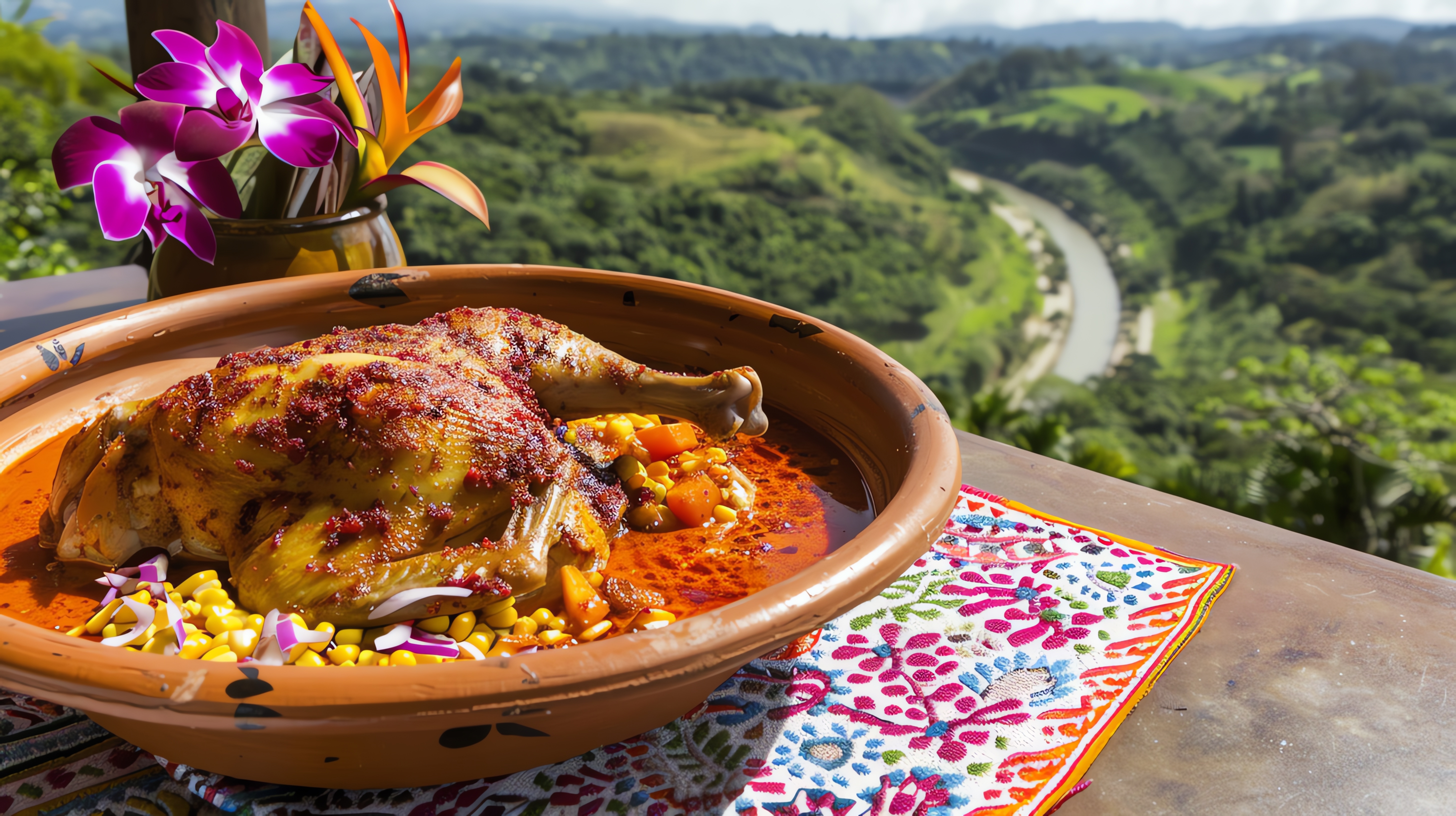Where the Soul of Panama Dances with the Sea
The Azuero Peninsula, located in southern Panama and extending into the Pacific Ocean, is a captivating destination that beautifully blends cultural heritage with unspoilt natural beauty. Often referred to as Panama’s cultural heartland, the region is renowned for its traditional festivals, artisan crafts, and tranquil coastal towns — all set against a backdrop of golden beaches and rolling countryside.
Azuero’s diverse landscapes span dry tropical forests, surf-friendly beaches, and wildlife-rich national parks. Outdoor enthusiasts will find much to enjoy here — from world-class surfing at Playa Venao and Cambutal, to birdwatching and hiking through the hills and protected reserves like Cerro Hoya National Park. This lesser-known park, located at the southern tip of the peninsula, shelters endangered species such as jaguars, ocelots, and harpy eagles.
Just off the coast near the charming town of Pedasí lies Isla Iguana Wildlife Refuge — a paradise for nature lovers and snorkellers alike. With its white-sand beaches, coral reefs, and abundant birdlife including magnificent frigatebirds, the island also serves as a vital nesting ground for sea turtles.
The cultural vibrancy of the Azuero Peninsula is one of its greatest draws. Towns such as Las Tablas and Pedasí are famous for their colourful local celebrations, particularly Carnival and the Festival de las Mil Polleras, where the streets come alive with traditional music, folkloric dress, and joyous parades that reflect the soul of Panamanian identity.
Why Visit the Azuero Peninsula?
Whether you’re seeking authentic cultural immersion or an off-the-beaten-track eco-adventure, the Azuero Peninsula offers a richly rewarding experience. Its unique blend of biodiversity, local tradition, and sustainable tourism makes it one of Panama’s most enchanting destinations. From surfing Pacific waves and exploring ancient forests to experiencing heartfelt hospitality and time-honoured customs, Azuero invites travellers to discover a slower, more soulful way of life.

Panama

-5 hours

Balboa (PAB) & US Dollars (USD)

Snorkelling
Best Time To Go
The best time to visit the Azuero Peninsula is during the dry season, which runs from mid-December to April. This period offers the most consistent sunshine, making it ideal for beach activities, hiking, and exploring the region’s many cultural attractions. The weather is warm and dry, perfect for surfing along the Pacific coast at spots like Playa Venao and Cambutal, or for venturing into the hills and national parks. It's also when the peninsula comes alive with traditional celebrations — most notably, the Carnival in Las Tablas, held in February or early March, which is one of the most spectacular and vibrant in the country.
That said, the rainy or “green” season, from May to early December, has its own unique appeal. While showers are more frequent—usually in the afternoon—the mornings are often clear and fresh, and the landscape becomes lush and vividly green. This is a great time for travellers seeking a quieter, more affordable experience, as crowds thin out and accommodation prices tend to drop. The green season is also excellent for wildlife viewing, particularly for birdwatching and sea turtle nesting along the coast. Surfers will still find good conditions, especially between June and August, when Pacific swells are strong and consistent.
Whether you’re after sunshine and festivities or peaceful nature and fewer tourists, the Azuero Peninsula offers something special throughout the year.
About Azuero Peninsula and its surrounding areas
The best places to stay in the Azuero Peninsula are Pedasí and Cambutal, each offering a unique charm and easy access to the region’s natural beauty. Pedasí is a quaint historic town known for its warm local culture, colourful architecture, and close proximity to stunning beaches like Playa Arenal and Isla Iguana. Cambutal, located further down the coast, is a peaceful beachside village popular with surfers and travellers seeking a more secluded, nature-focused retreat.
Staying in either location allows for convenient exploration of Azuero’s many attractions, including national parks, wildlife refuges, and cultural festivals. For a deeper connection to Panama’s traditional roots, base yourself in Las Tablas — the cultural capital of the region, famous for its lively Carnival and folk celebrations.
Top Things to Do and See in the Azuero Peninsula:
- Pedasí & Playa Arenal – Explore this charming town and relax on nearby beaches. Take a boat trip to Isla Iguana for snorkelling, birdwatching, and turtle spotting.
- Cambutal – A quiet, picturesque beach destination surrounded by nature. Ideal for surfing, yoga retreats, whale watching (July–October), and scenic hikes into the surrounding hills.
- Las Tablas – Experience the vibrant heart of Panamanian culture, especially during Carnival or the Festival de la Pollera, where traditional dress, parades, and folkloric music take centre stage.
- Cerro Hoya National Park – Discover one of Panama’s most remote and biodiverse national parks, home to jaguars, monkeys, and endemic bird species. Excellent for hiking and eco-tours.
- Isla Iguana Wildlife Refuge – A protected island just off Pedasí, known for its white-sand beaches, coral reefs, nesting seabirds, and seasonal sea turtle sightings.
- Whale Watching – From July to October, humpback whales migrate along Azuero’s coast — join a local tour for a chance to see them up close.
- Venao Beach (Playa Venao) – A world-class surf destination with a laid-back, social vibe. Great for surf lessons, beachfront dining, and coastal nightlife.
- Horseback Riding – Ride through the countryside or along the beach for a truly immersive experience in the rural charm of the Azuero region.
- Salinas de Mensabé (Salt Fields) – Near Las Tablas, explore the traditional salt flats of Mensabé, where locals still harvest sea salt using age-old techniques. The geometric pools are especially striking at sunrise or sunset and provide a fascinating glimpse into one of the peninsula’s oldest industries.
- Traditional Artisan Workshops – Visit local workshops where artisans craft Panama’s famous polleras, handmade drums, pottery, and intricate devil masks used in traditional dances.
- Local Cuisine & Food Tours – Savour traditional Panamanian dishes like sancocho (chicken stew), carimañolas (stuffed yuca), and hojaldres (fried bread). Don’t miss trying locally produced cheese, rum, and fresh seafood.
Azuero Peninsula Highlights
Some of the sights and experiences in and around Azuero Peninsula, Panama






